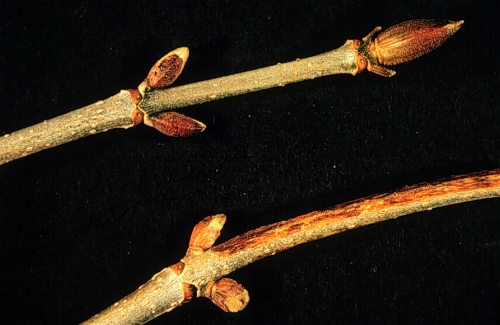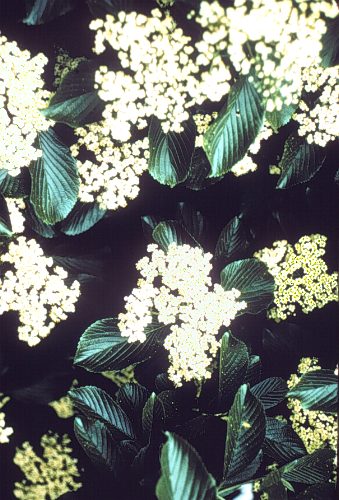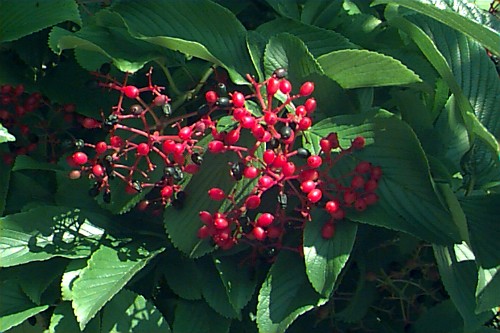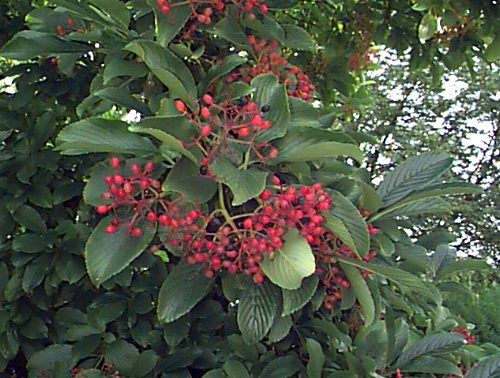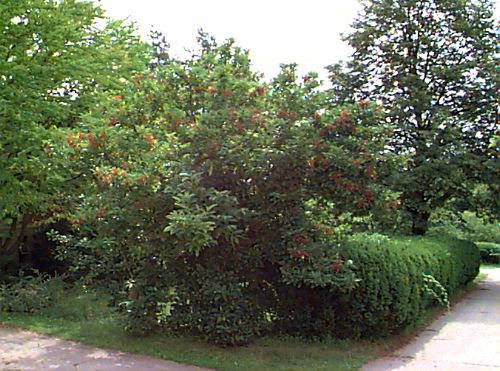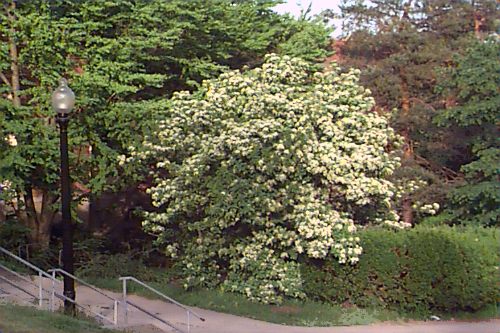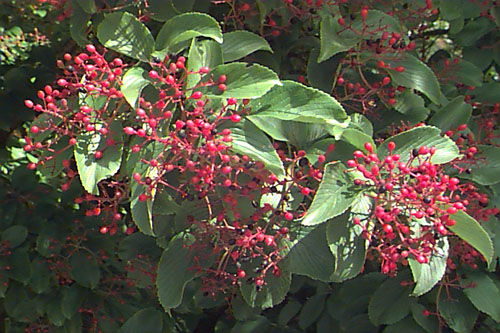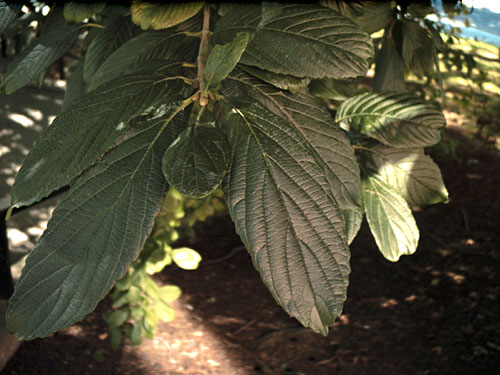Viburnum sieboldii
Siebold Viburnum
Caprifoliaceae
ExpandHabitat
- native to Japan
- cold hardy to zone 4
Habit and Form
- a deciduous large shrub to small tree
- open habit with stiff branches
- 15' to 20' tall
- 10' to 15' wide
- coarse texture
- medium growth rate
Summer Foliage
- deciduous simple leaves
- opposite leaf arrangement
- elliptic leaf shape
- 2" to 5" long
- serrated leaf margins
- dark green leave color
- pubescent leaf veins and petioles
- crushed leaves emit foul odor
Autumn Foliage
- no fall color
Flowers
- off-white flowers
- blooms in late May
- flat-topped cymes
- 3" to 6" across
- very showy, can cover whole plant
Fruit
- oval drupes, found in clusters
- red maturing to black
- ripens in September
- 0.33" to 0.5" in length
- very showy
Bark
- gray
- stems are stout
- leaf scar connects around the stem
- alligator-like bark
- prominent lenticels
Culture
- very easy to grow
- prefers moist, well-drained soils
- full sun to partial shade
- pH adaptable
- easily transplanted
Landscape Use
- border
- screen
- specimen
- mass plantings and groupings
- to attract birds
- for flowering effect
Liabilities
- free from serious problems
ID Features
- large, opposite leaves
- oval, black fruits in clusters
- upright stiff habit
- flat clusters of small creamy white flowers
- leaf scars encircle stems
- valvate buds
- alligator-plated bark
Propagation
- by cuttings
- by seed
Cultivars/Varieties
'Seneca' - The most popular form of this species, this plant was selected for its abundant production of red fruit that remain attractive far longer than those of the species. This is a large shrub or small tree that reaches 20' tall and offers dark green foliage that may turn red in fall.
